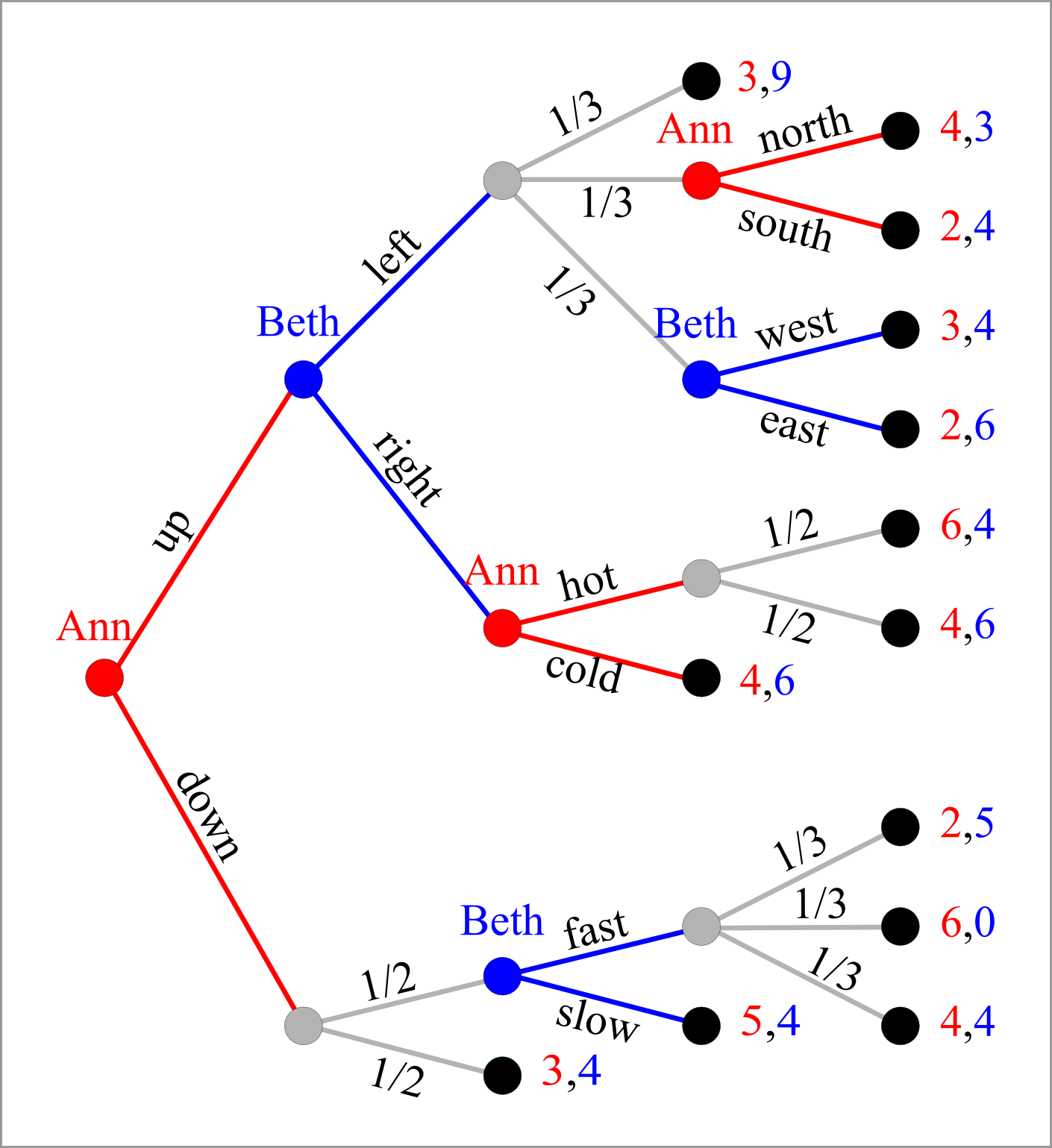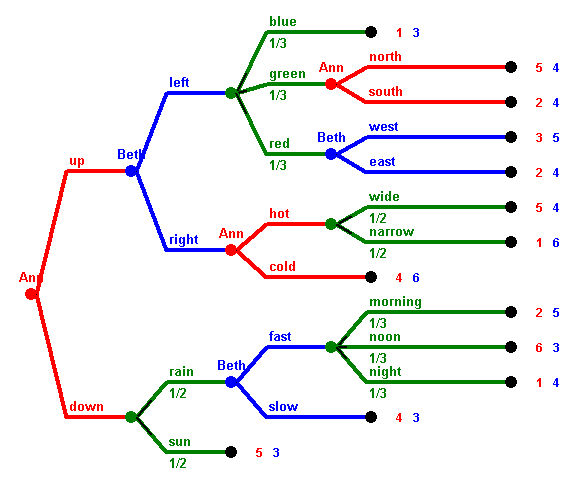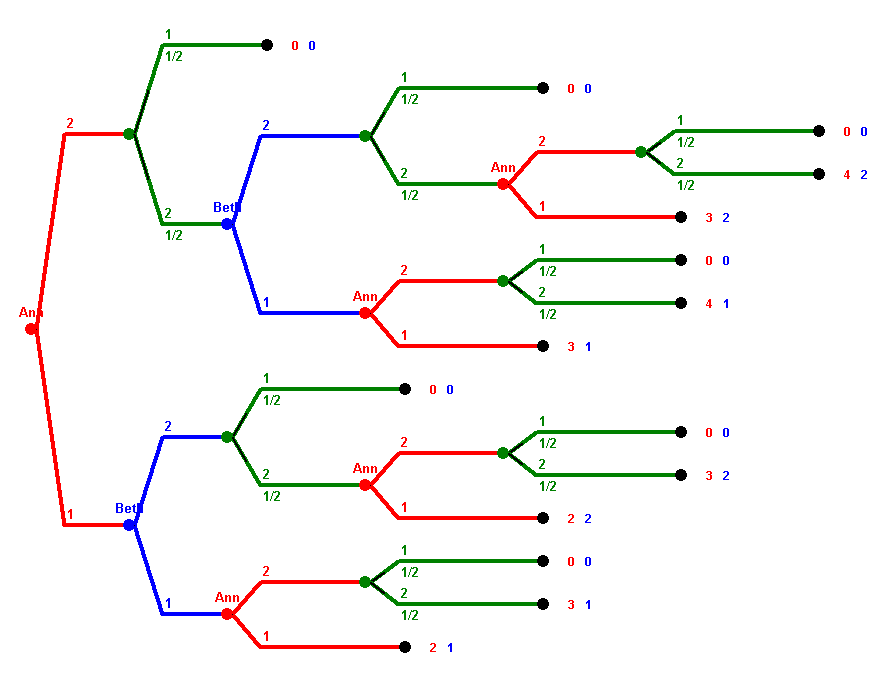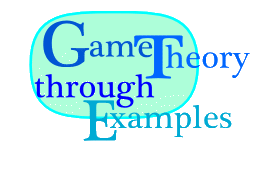

Note that you can describe the game using the following 27 states, where each symbol subsumes the cases obtained by rotation and reflection.


- Analyze the game using backwards induction.
- What first move would Ann make when playing optimally?
- What is the expected payoff for Ann in the game when Ann plays optimally?
5 PIRATES with random selection:
Five pirates have to decide how to distribute 20 gold coins they have found.
They do it according to the following rules.
In each round they sit in a circle and rotate a bottle of rum.
The one to which the bottle points has to propose a distribution of the coins.
This proposal is voted on, with the proposer voting too, and even deciding in case of a tie.
That implies that in case of only two pirates, the proposal will always win, and in case of four pirates,
the proposer needs only one of the others voting for the proposal.
If the proposal wins, everything is settled. If not, the proposer is thrown into the water and dies,
and the next round starts. Assume that the pirates value their life worth 40 gold coins,
and prefer throwing somebody overboard if everything else is equal (are playing the "hostile" variant).
What would you propose if the bottle points on you and there are 2, 3, 4, or 5 pirates left?
- a) heart 7, spade 8, spade 10
- b) heart 10, spade 10, spade K
- a) heart 7, spade 8, spade 10
- b) heart 10, spade 10, spade K
